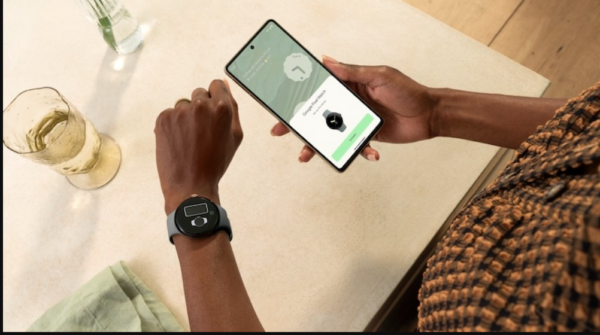The Pixel Watch may be used with Google Fit 2023
When Google introduced the Android Wear platform in 2014, the potential of smartwatches immediately sparked widespread interest. Who wouldn’t want a little screen on their wrist that syncs up with everything else? Users of Google’s Android operating system hoped that the company would soon develop a wristwatch that would work seamlessly with their other electronic gadgets. On October 6, 2022, after years of anticipation, Google released the Pixel Watch to the public.
This fashionable wrist accessory rose to prominence as a top Android smartwatch because to its advanced health and fitness tracking capabilities and attractive aesthetic. Yet, it has limitations just as other early forms of technology. The failure to support Google Fit, a widely used health and fitness program, is a huge drawback. This may be a dealbreaker for those who rely on Google Fit to monitor their fitness progress. But can we take this at face value? Follow this!
The Pixel Watch may be used with Google Fit.

Even though Google Fit isn’t pre-installed on the Pixel Watch, you can still utilize it. All you have to do is update your WearOS software and install Google Fit from the Play Store. You have the option of using both the built-in Fitbit app and Google Fit simultaneously, or turning off Fitbit completely.
While the majority of Google Fit’s functions are available on the Pixel Watch, background heart rate tracking is restricted to the Fitbit app under Google’s acquisition conditions. While this may attract some users to sign up for Fitbit’s Premium service, it also prevents your heart rate data from being synced with the Google Fit app. Taking manual measurements or receiving heart rate data during a workout is another option for monitoring exertion. Consider this while you evaluate Pixel Watch fitness apps.
Is Fitbit superior to Google Fit?

Google Fit is the search giant’s answer to Samsung Health and Apple Health, letting users keep tabs on their activity levels and other fundamental health metrics. Nevertheless, Google Fit does not provide as much assistance for wearables as do Samsung and Apple. Instead, it acts as a center for health data collected by other applications like Strava, Oura Ring, and Fossil.
Fitbit, on the other hand, is a comprehensive fitness monitoring program that rivals Samsung Health and Apple Health by accommodating both devices and manually entered data like weight and water consumption. Music playback, customization settings, auto pause, elevation monitoring, calorie intake tracking via a barcode scanner in the app, a passcode, and features like ovulation tracking are all available, unlike in Google Fit.
Google Fit, on the other hand, has its own unique capabilities, including support for routes, widget support, smart coaching, pace measurement, voice feedback, a food journal with a point-based system, live tracking/sharing, and a stopwatch. As a result, in the end, each app offers something special that the other doesn’t. Due to Google Fit’s inability to handle background HRM, Fitbit has a little advantage over the Pixel Watch.
Can the Fitbit data be transferred to Google Fit?

Your Fitbit and Google Fit data may be synchronized in two ways. The first option is to just import all of your Google Fit data into Fitbit. You may use the Pixel Watch’s health monitoring functions and have all your workout data in one place by doing this. Your Fit information may be imported into Fitbit after being exported from Fit via Google Takeout. This is a simple approach, however there is another way to get the same result.
Health Connect is an alternative method for syncing your Fit and Fitbit data. This program allows you to synchronize several fitness applications, and it is possible that this is how Google plans to link Fitbit and Google Fit. This strategy is preferable to the alternative since it consolidates all of your fitness-related data into a single location (Google Fit).
These methods of integrating Fitbit and Google Fit are efficient, but they appear to be stopgap measures at best. In the past, Google has been known to aggressively shut down competing services like Google Play Music and YouTube Music. Thus, it’s probable that one of these applications may disappear in the not-too-distant future. But, at the moment, both applications may be used simultaneously.
Wearing a Pixel Watch and committing to a fitness routine

The Google Pixel Watch, the company’s first smartwatch, is a stylish device that can compete with the best of the fourth- and fifth-generation models. It is the perfect complement to your Pixel phone, Google security camera, and smart TV thanks to its ability to work in tandem with other Google products. The Pixel 7 also doesn’t lag behind in this area in terms of health and fitness. It has all the features that make Fitbit so popular, including comprehensive tracking of your health. The inconspicuous HRM and the forthcoming pulse oximeter are two such examples. It will provide you with all the data you need to achieve your fitness objectives by monitoring a wide variety of activities, such as climbing, swimming, and sleep.
Yet, what about longevity? Don’t worry, however. The Pixel Watch was constructed to last. This watch’s Corning Gorilla Glass construction makes it resistant to scratches and other damage that might occur during normal wear. With 5 ATM of water resistance, you may take it swimming with you without worry. The Pixel Watch, however, has other strengths. It has a fall detection feature that will keep you safe as you exercise. Feel free to test your limits, knowing that assistance is literally at the flick of your wrist. The Pixel Watch is a fantastic first-generation piece of technology, even if it isn’t quite the “Apple Watch of the Android world” just yet.

